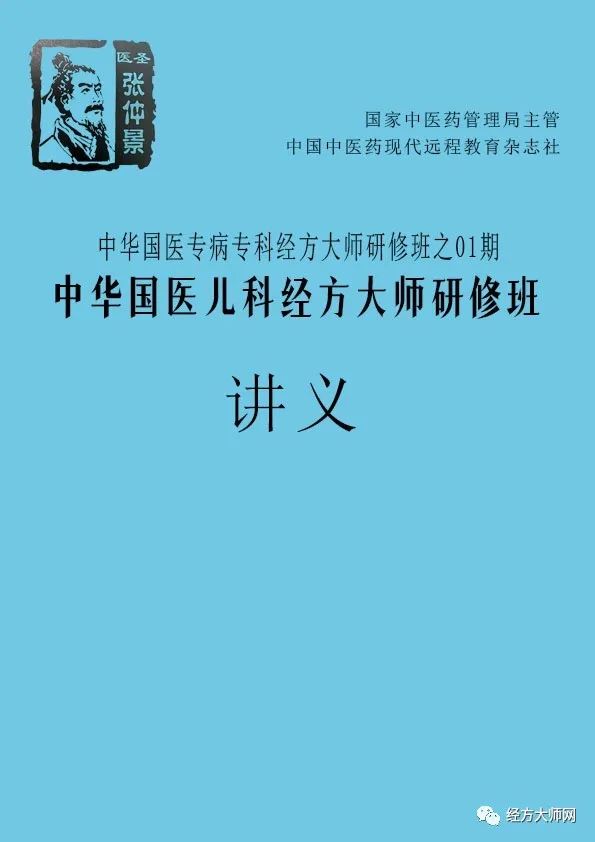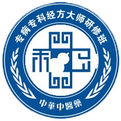 Fuzi (Aconitum carmichaelii) is one of the four major herbs in traditional Chinese medicine (TCM) (along with ginseng, gypsum, and rhubarb), collectively known as the “Four Pillars of Medicine,” highlighting its significance. The primary function of Fuzi is to warm the yang of the five organs. Historically and in modern times, Zhang Zhongjing is recognized for his adept use of Fuzi. In the “Shang Han Lun” (Treatise on Cold Damage), Fuzi is utilized in various formulas for different syndromes, including: in the Taiyang chapter, formulas such as Guizhi Jia Fuzi Tang (Cinnamon Twig Decoction with Aconite), Guizhi Qu Shaoyao Jia Fuzi Tang (Cinnamon Twig Decoction without Peony with Aconite), Gancao Fuzi Tang (Licorice and Aconite Decoction), Guizhi Fuzi Tang (Cinnamon Twig and Aconite Decoction), Mahuang Xixin Fuzi Tang (Ephedra and Asarum Decoction with Aconite), Mahuang Fuzi Gancao Tang (Ephedra, Aconite, and Licorice Decoction), Fuzi Xiexin Tang (Aconite Decoction for Heart Drainage), and Shaoyao Gancao Fuzi Tang (Peony and Licorice Decoction with Aconite); in the Taiyin chapter, there is Lizhong Tang (Regulating the Middle Decoction); in the Shaoyin chapter, formulas such as Sini Tang (Frigid Extremities Decoction), Sini Jia Renshen Tang (Frigid Extremities Decoction with Ginseng), Tongmai Sini Tang (Unblocking the Pulse Frigid Extremities Decoction), Tongmai Sini Jia Zhudanzhi Tang (Unblocking the Pulse Frigid Extremities Decoction with Pig Gallbladder), Ganjiang Fuzi Tang (Dried Ginger and Aconite Decoction), Fuzi Tang (Aconite Decoction), Baitong Tang (White Unblocking Decoction), Baitong Jia Zhudanzhi Tang (White Unblocking Decoction with Pig Gallbladder), Zhenwu Tang (True Warrior Decoction), and Fuling Sini Tang (Poria Frigid Extremities Decoction); in the Jueyin chapter, there is Wumei Wan (Mume Pill).
Fuzi (Aconitum carmichaelii) is one of the four major herbs in traditional Chinese medicine (TCM) (along with ginseng, gypsum, and rhubarb), collectively known as the “Four Pillars of Medicine,” highlighting its significance. The primary function of Fuzi is to warm the yang of the five organs. Historically and in modern times, Zhang Zhongjing is recognized for his adept use of Fuzi. In the “Shang Han Lun” (Treatise on Cold Damage), Fuzi is utilized in various formulas for different syndromes, including: in the Taiyang chapter, formulas such as Guizhi Jia Fuzi Tang (Cinnamon Twig Decoction with Aconite), Guizhi Qu Shaoyao Jia Fuzi Tang (Cinnamon Twig Decoction without Peony with Aconite), Gancao Fuzi Tang (Licorice and Aconite Decoction), Guizhi Fuzi Tang (Cinnamon Twig and Aconite Decoction), Mahuang Xixin Fuzi Tang (Ephedra and Asarum Decoction with Aconite), Mahuang Fuzi Gancao Tang (Ephedra, Aconite, and Licorice Decoction), Fuzi Xiexin Tang (Aconite Decoction for Heart Drainage), and Shaoyao Gancao Fuzi Tang (Peony and Licorice Decoction with Aconite); in the Taiyin chapter, there is Lizhong Tang (Regulating the Middle Decoction); in the Shaoyin chapter, formulas such as Sini Tang (Frigid Extremities Decoction), Sini Jia Renshen Tang (Frigid Extremities Decoction with Ginseng), Tongmai Sini Tang (Unblocking the Pulse Frigid Extremities Decoction), Tongmai Sini Jia Zhudanzhi Tang (Unblocking the Pulse Frigid Extremities Decoction with Pig Gallbladder), Ganjiang Fuzi Tang (Dried Ginger and Aconite Decoction), Fuzi Tang (Aconite Decoction), Baitong Tang (White Unblocking Decoction), Baitong Jia Zhudanzhi Tang (White Unblocking Decoction with Pig Gallbladder), Zhenwu Tang (True Warrior Decoction), and Fuling Sini Tang (Poria Frigid Extremities Decoction); in the Jueyin chapter, there is Wumei Wan (Mume Pill).
Fuzi warms the kidney yang
It is used for kidney yang deficiency leading to inability to transform qi and circulate fluids, resulting in edema (as seen in Renshen Tang (Ginseng Decoction) and Zhenwu Tang), and for symptoms of nocturia, low back pain, and fatigue due to deficiency (as in Jinkui Shenqi Wan (Kidney Qi Pill)). In formulas for urinary stones, adding Fuzi (3-5 grams) enhances stone expulsion.
Fuzi warms the spleen yang
For spleen yang deficiency causing poor transformation of food and fluids, leading to chronic diarrhea or acute diarrhea damaging spleen yang, Fuzi is combined with Paojiang (processed ginger), Jiao Baizhu (fried Atractylodes), Fuling (Poria), Zhi Gancao (honey-fried Licorice), Renshen (Ginseng), and Fulong Gan, with a small addition of Wumei (Mume) and Huanglian (Coptis) for quick efficacy.
Fuzi also warms the lung yang and liver yang
In TCM terminology, lung yang deficiency and liver yang deficiency are not commonly referred to; however, lung qi deficiency with cold symptoms indicates lung yang deficiency (e.g., cough, wheezing, clear phlegm, cold back, feeling cold). The liver is a solid organ that houses the fire of the body; liver yin and blood are the foundation, while liver yang and qi are functional. Even when liver yin and blood are abundant, there can be times when liver yang and qi are insufficient. Symptoms include fatigue, lack of joy, cold pain at the vertex, dull pain in the hypochondrium and lower abdomen, and cold sensations in the genital area. The pulse is wiry and slow. For lung yang deficiency, Fuzi can be combined with Ganjiang (dried ginger) and Zhi Gancao (honey-fried Licorice); for liver yang deficiency, Fuzi can be combined with Guizhi (Cinnamon Twig) and Huangqi (Astragalus).
Fuzi is also a key herb for bi syndrome
Bi syndrome encompasses a wide range of conditions, including rheumatoid arthritis, sciatica, ankylosing spondylitis, and periarthritis of the shoulder, among over 20 diseases. In the study of bi syndrome, Zhu Lao has dedicated decades, and his Yishen Juanbi Wan (Kidney Tonifying Bi Expelling Pill) is renowned both domestically and internationally. For stubborn and severe pain, he often combines decoctions to quickly control the condition and alleviate patient suffering. In cases of bi syndrome with a cold component, Zhu Lao frequently uses Fuzi as the main herb, combined with Guizhi, Chishao (Red Peony), Baizhu (Atractylodes), Gancao (Licorice), Zhi Chuanwu (processed Aconite), Xixin (Asarum), Chuan Shanzhong (Dried Ginger). For bi syndrome with damp-heat, Fuzi is also used, often combined with Cangbaizhu (Pale Atractylodes), Huangbai (Phellodendron), Can Sha (Silkworm Sand), Renshen (Ginseng), and Yiyiren (Job’s Tears).
In this context, the use of Fuzi is justified, as there is an existing damp pathogen; dampness is a yin pathogen, and excessive dampness leads to weak yang. Additionally, due to damp-heat accumulation, yang qi is obstructed, hence the use of Fuzi, which is very pungent and hot, to promote yang. Although Fuzi is used in both cases, the combinations and dosages differ; for wind-cold-damp bi syndrome, larger doses (15-30g) are required, while for other conditions, smaller doses (3-6g) suffice. Fuzi is also commonly used for periarthritis of the shoulder, where patients often report cold sensations in the shoulder, fear of wind, and a preference for warmth. Symptoms worsen at night when the shoulder is uncovered. Zhu Lao’s experience suggests using Fuzi as the main herb, combined with Guizhi, Lufengfang (Bee’s Nest), Qianghuo (Notopterygium), Fangfeng (Siler), Jianghuang (Turmeric), Haitongpi (Alstonia), Chishao, Danggui (Angelica), Yinyanghuo (Epimedium), Xixin, Weilingxian (Corydalis), Huangqi, and Baizhu, with 15 doses constituting one treatment course, often yielding effective results. For ankylosing spondylitis, larger doses of Fuzi are often combined with kidney tonifying and blood activating herbs, such as Laojiao (Deer Antler), Yinyanghuo, Shudihuang (Rehmannia), Buguzhi (Psoralea), Lufengfang, Qishe (Agkistrodon), and Chishao, along with the oral intake of Yishen Juanbi Wan. However, this condition is quite stubborn and requires persistent medication; results are not seen in a short period.
Not only for bi syndrome, but many chronic inflammations also utilize Fuzi
Such as chronic appendicitis, chronic nephritis, chronic pelvic inflammatory disease, chronic bronchitis, etc. Zhu Lao believes that one should not shy away from using Fuzi just because it contains the character “inflammation”; Fuzi actually has good anti-inflammatory properties. Of course, the overall approach should still adhere to syndrome differentiation and treatment principles. Additionally, Fuzi can be combined with herbs that clear heat and detoxify, as seen in Zhang Zhongjing’s treatment of intestinal abscess with Yiyiren Fuzi Baijiao San (Job’s Tears and Aconite Powder), which has set a precedent. Wang Ang’s “Bencao Beiyao” (Essential Herbal Medicine) comprehensively and incisively describes the functions of Fuzi: “Its nature is floating and not sinking, its use is swift and not restrained, it circulates through the twelve meridians, reaching everywhere. It can guide qi tonifying herbs to restore lost yang; guide blood tonifying herbs to nourish insufficient true yin; guide dispersing herbs to open the pores and expel exterior wind-cold; guide warming herbs to reach the lower jiao and expel interior cold-damp.” This can be referenced.
In summary, Fuzi has a wide range of clinical applications, and when used appropriately, its effects are remarkable. However, it should not be misused. Some practitioners, due to its rapid warming and uplifting effects, often misuse Fuzi. There have been reports of a certain famous physician whose prescriptions included Fuzi in every formula, and no patient was without Fuzi; others have written that Fuzi can be added to any formula like adding MSG to enhance flavor, which betrays the spirit of syndrome differentiation and treatment principles and is inappropriate. All medicines have their pros and cons and should be used judiciously.
Regarding the dosage and method of Fuzi, Zhu Lao has repeatedly pointed out to us:
First, different individuals have different tolerances to Fuzi.
Some can use 30-60g without issue, while others may experience toxic reactions with just a few grams. Therefore, except in emergencies, caution should be exercised; it is advisable to start with a small dose (3-6g), and if there are no reactions, gradually increase the dosage, generally up to 30g. Once effective, there is no need to continue with large doses; a gradual reduction can also be adopted.
Second, the processing of Fuzi
involves soaking in brine and then steaming, which destroys its toxic components while preserving its effective ingredients. However, the steaming process is currently still empirical, and it is recommended that research institutions conduct tests to provide the best processing methods for manufacturers. The Japanese processing method involves high temperature and pressure to destroy its aconitine alkaloids, making it much safer for decoction without the need for pre-boiling or prolonged boiling (of course, the dosage of Fuzi in Japanese Kampo medicine is very small). Given the current situation, if a larger dose of Fuzi is used, it is still advisable for the preparer to enter the medicine. It must be boiled for half an hour, and it is best to add three to five slices of fresh ginger or a spoonful of honey during the boiling process. The experience of Sichuan doctors is to taste until there is no numbness in the mouth. If there is a tingling sensation in the mouth and tongue, it should be boiled again. Additionally, the water used to boil Fuzi should be sufficient at once and not added midway.
In recent years, Zhu Lao has praised the experience of Mr. Li Ke, a renowned TCM practitioner from Shanxi, who is adept at using Fuzi to treat critical conditions. His usual dosage is generally 30g, which can be increased to 50-200g depending on the condition; this is due to precise combinations and suitable decoction methods, with prolonged boiling and divided doses, and no adverse events have been reported, which is worth learning from.
The first symptoms of Fuzi poisoning include dizziness, palpitations, numbness of the mouth, tongue, lips, and limbs, and slurred speech. At this time, a large bowl of rice washing water can be taken immediately, which helps alleviate poisoning symptoms, followed by decocting 60g of Gancao (Licorice) in water. In severe cases, in addition to the above symptoms, nausea, vomiting, cold and wet skin, chest tightness, slow and weak heart rate, low blood pressure, premature contractions, arrhythmia, decreased body temperature, or sudden convulsions may occur, and immediate hospital emergency treatment is necessary.

Recommended Books


Previous Featured Articles


